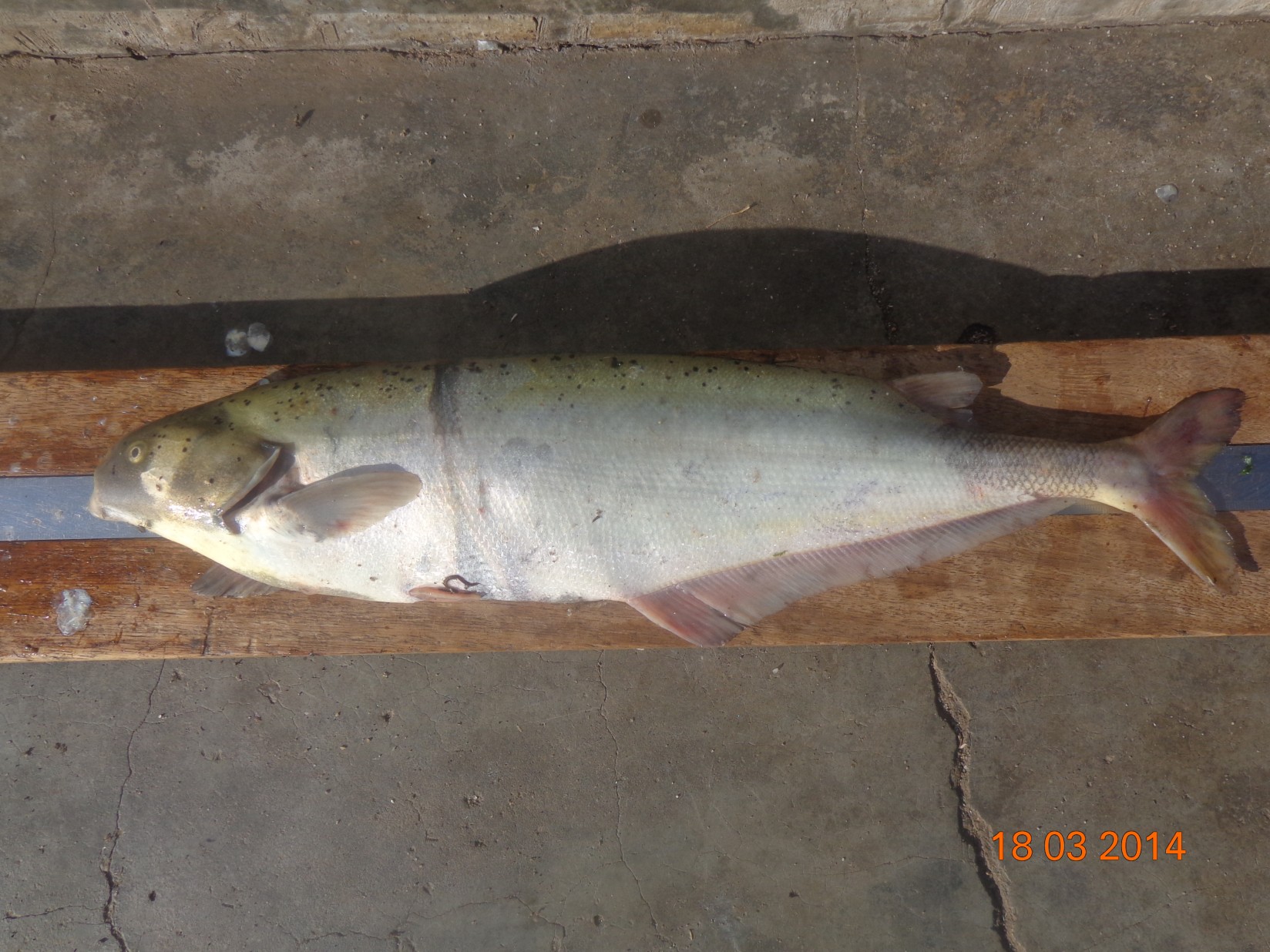Common names:
Unknown
Jonam: Ngai
Taxonomic tree
Kingdom: Animalia
Phylum: Chordata
Class: Actinopterygii (ray-finned fish)
Order: Osteoglossiformes (Fishes with bony tongue)
Family: Mormyridae (fishes with Elephant-like snout)
Genus: Hyperopisus
Species: Hyperopisus bebe (Lacepède, 1803)
Number of Occurrancies: 5
Etymology(based on Sharpf & Lazara, 2018)
- Hyperopisus: hypero-, very or above, referring to palatal teeth (on roof of mouth), which are pisus, pisiform (pea-shaped)
- bebe: named after a place in Egypt where this species is abundant
Synonyms: click here to view synonyms
Type locality: Nile River, Egypt. No types known.
General identification features for mormyrids: Elongate body; narrow and distinct caudal peduncle; opercular bones hidden beneath the skin, reduced opening of the branchial cabity reduced; small eyes covered by the skin; naked head, its skin thick and well supplied with mucus glands; small cycloid scales; and muscles of the caudal peduncle modified to form an electric organ, and the elaphant-like snout
Distinguishing characters for the genus
- Elongate and compressed body
- Anal fin is 5 or more times longer than dorsal fin
- Pelvic fins nearer the pectoral than the anal fin
- Nostrils near the tip of the snout than the eye
- Terminal mouth situated below the eye level; teeth in both jaws small and notched, never more than 6 in each jaw
Distinguishing characters for the species
- Depth of the body contained up to 3-5.5 times in standard length, and length of the head 4.5-5.75 times
- Dorsal head profile strongly curved
- Mouth small and terminal
- Teeth notched, 3-5 and 4-6 in upper and lower jaws, respectively
- Dorsal fin with 12-16 rays, of which the first two or three are unbranched
- Anal fin with 54-64 rays, its origin considerably in advance of the dorsal
- Lateral line with 90-120 scales; 20 around the caudal peduncal, which is nearly twice as long as deep
- Colour is silver, the dorsal surface is iridescent grey-olive or purple.
Distribution in Uganda: Albert and Murchison Niles, Aswa river
Occurence: Native
Habitat: Fluviatile, common in waters just above the bottom (demersal); potamodromous.
Feeding: No data on food of H. bebe in Uganda. Elsewhere, the species is known to feed on molluscs.
Biology: Largest size recorded is 47 cm. There is no information on breeding of species in Uganda. Elsewhere, Hyperopisus breeds in swamps during the rainy season.
Economic importance/End use: The species is not abundant and is part of incidental catch.
IUCN conservation status: click here to view IUCN status
Threats: Clearence of swamps and marginal wetlants where the species breeds
Main references
- Greenwood PH. 1966. The fishes of Uganda. The Uganda Society, Kampala. 131 pages.
- Sharpf C, Lazara J.K. 2018. Fish Name Etymology Database v16. www.etyfish.org


